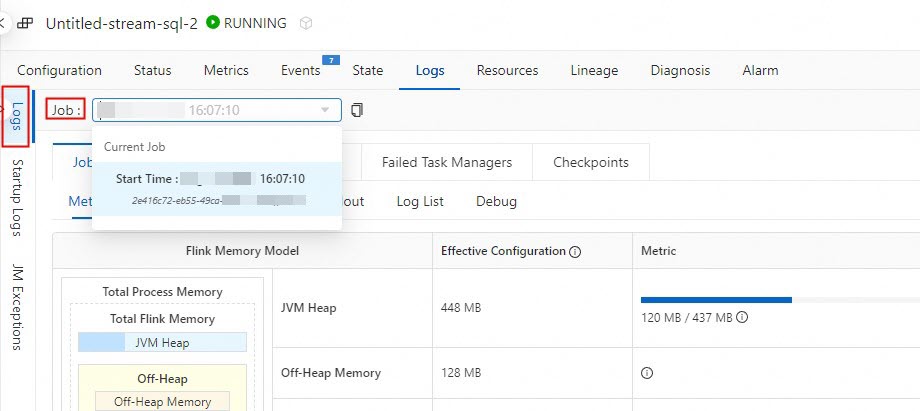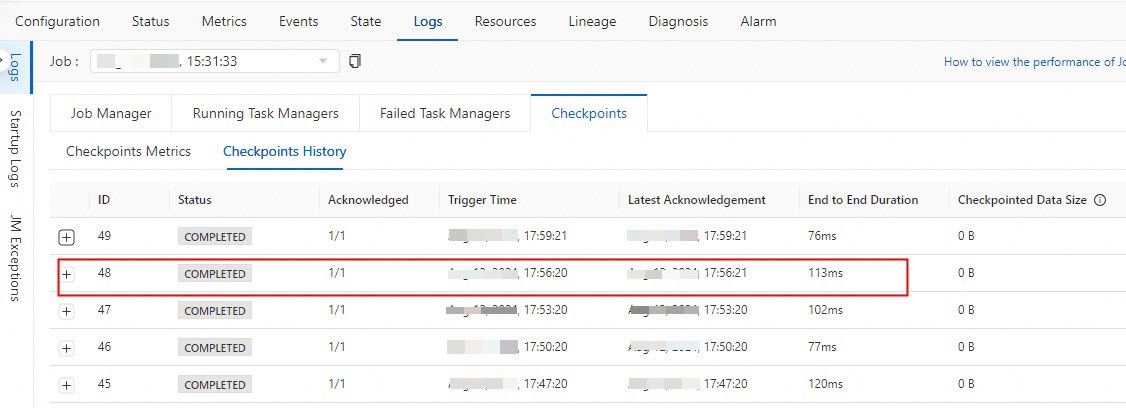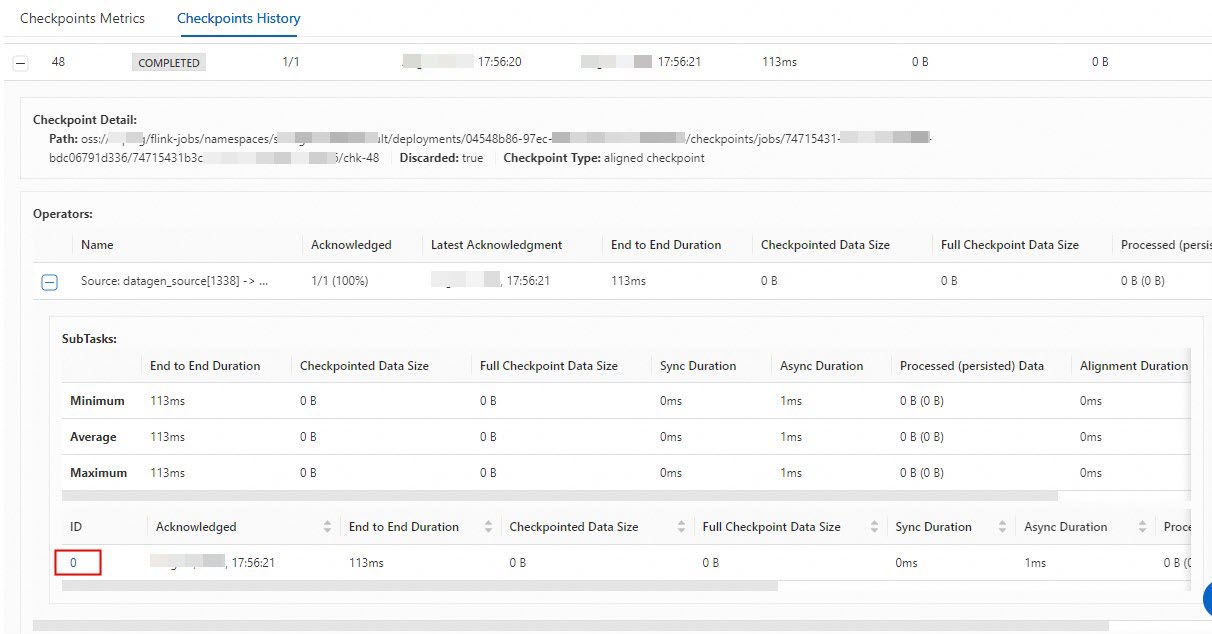If an error occurs when a deployment starts or is running, you can view the exception logs of the deployment. This topic describes how to view the exception logs of a deployment. The exception logs include logs of JobManager exceptions, logs of failed TaskManagers, and logs of the TaskManagers on which checkpoints are generated at a low speed.
Background information
Type | Description |
Logs of JobManager exceptions | If a deployment fails to run due to a deployment failover, you must check whether a JobManager exception occurs. For more information about how to view the logs of JobManager exceptions, see the View the logs of JobManager exceptions section of this topic. Note If the JobManager of the deployment fails to start, the deployment failover is not caused by a JobManager exception. In this case, you can view the boot logs to identify the issue. |
Logs of failed TaskManagers | If a deployment runs as expected, no TaskManagers fail. However, if a deployment runs at a high risk level, one or more TaskManagers may fail and then run again. If a TaskManager fails, you can view the logs of the TaskManager to identify the issue. For more information about how to view the logs of failed TaskManagers, see the View the logs of failed TaskManagers section of this topic. Note You can view the logs of failed TaskManagers only if log archiving is enabled for the deployment. You can view the logs of failed TaskManagers within the retention period that is configured in the Logging section. |
Logs of the TaskManagers on which checkpoints are generated at a low speed | If one or more checkpoints are generated at a low speed when a deployment is running, you can view the logs of the TaskManagers on which the checkpoints are generated to locate the issue. For more information about how to view the logs of the TaskManagers on which the checkpoints are generated at a low speed, see the Find the checkpoints that are generated at a low speed and view the logs of the TaskManagers for the checkpoints section of this topic. |
Prerequisites
The deployment that you want to manage is in the RUNNING state.
Usage notes
Logs are displayed by page. Each page can display up to 1 MB of log records and approximately 8,000 to 9,000 lines of log records. In most cases, you can identify an issue based on the log records that are displayed on the first page. If you cannot identify the issue based on the logs that are displayed on the first page, go to the next page.
View the logs of JobManager exceptions
Log on to the Realtime Compute for Apache Flink console.
find the workspace that you want to manage and click Console in the Actions column.
In the left-side navigation pane, click . On the Deployments page, find the deployment that you want to manage and click its name.
In the left-side pane of the Logs tab, click JM Exceptions to view the exception information about the JobManager.
 Note
NoteIn the Exception History section, you can view the logs of the JobManager exceptions of the deployment within seven days. You can also specify an exception type to view the historical logs of the related JobManager exceptions of the deployment.
View the logs of failed TaskManagers
Log on to the Realtime Compute for Apache Flink console.
find the workspace that you want to manage and click Console in the Actions column.
In the left-side navigation pane, click . On the Deployments page, find the deployment that you want to manage and click its name.
On the page that appears, click the Logs tab. In the left-side pane of the Logs tab, click Logs and select a deployment that is running from the Job drop-down list.

Click the Failed Task Managers tab.
Find the checkpoints that are generated at a low speed and view the logs of the TaskManagers for the checkpoints
Log on to the Realtime Compute for Apache Flink console.
find the workspace that you want to manage and click Console in the Actions column.
In the left-side navigation pane, click . On the Deployments page, find the deployment that you want to manage and click its name.
Find the checkpoints that are generated at a low speed and view the logs of the TaskManagers for the checkpoints.
On the Logs tab, click the Checkpoints tab and the Checkpoints History tab.
Find the checkpoints that are generated at a low speed based on the values in the End to End Duration column.

Click the
 icon on the left of the ID of a checkpoint that is generated at a low speed to view the operator to which the checkpoint belongs.
icon on the left of the ID of a checkpoint that is generated at a low speed to view the operator to which the checkpoint belongs. Click the
 icon on the left of the name of the operator to view the details about each subtask of the operator.
icon on the left of the name of the operator to view the details about each subtask of the operator. Click the ID of the task node to which the checkpoint belongs.

On the Running Task Managers tab of the page that appears, view the logs of the TaskManager on which the checkpoint is generated at a low speed.